List of Authors
>>About this blog
Recent blog post
|
[Dye]
December 14, 2016 09:00
Now, I'm doing an anime called "March Lion" every Saturday night on NHK.
This is a story about Rei Kiriyama, a professional shogi player who lost his parents when he was young, growing through interaction with the Kawamoto family and his friends, but the original comic is a very famous work, and in the spring of next year Ryunosuke Kamiki It is a work that will also be a movie starring.
The stage will be Shinkawa, Chuo-ku, Tsukuda-Tsukishima area.
Anime → http: //3lion-anime.com/
Movie → http: //3lion-movie.com/
If you're watching manga or anime, "What's the scenery of this! There is only a place where I think.
So, on a sunny day, I decided to follow them.
For those who don't know the anime, what is it? ? It may be...Please associate m(__)m
First of all, when I went along Kajibashi Street toward Hatchobori from Showa-dori, in the first scene, "Takahashi" was crossing to head for the game with my father-in-law.
It seems that I walked to Tokyo Station from here, but there is a distance. 。 (´・ω・)
But it might have been just right because I was about to reunion of tension, like I was scared to meet you because I wanted to meet you.
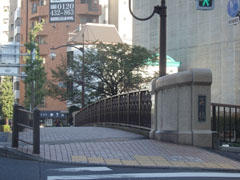 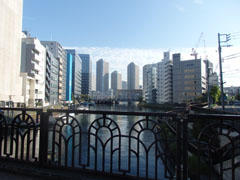
"Takahashi" was founded in the Edo period.
It seems that the name is derived from the high Arched bridge so that it does not bother the ship.
You can see "Minami Takahashi" in the back. It is the oldest railway bridge in Tokyo and the ward Tangible Cultural Property.
After a short walk across Takahashi, you will see Chuo-ohashi Bridge on your right.
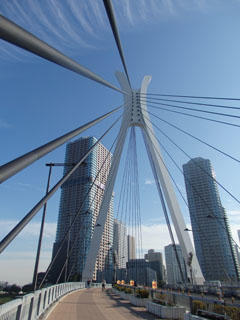
By the way, after crossing Takahashi, go straight while looking at Chuo-ohashi Bridge to the right, and you will see Mikazukido....Instead, there is "Suiedo". The strawberry Daifuku here is wrapped in anko, but the strawberries are large and fresh, and super delicious.
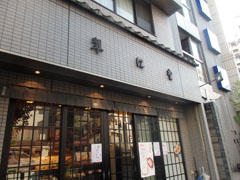 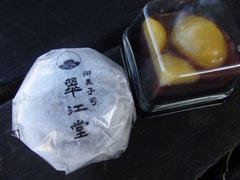
(PA PO PO ANG) oh!...It's derailed. I will return to Chuo-ohashi Bridge.
"Chuo-ohashi Bridge" can be said to be the main part of the work.
It is a bridge between June-cho (= Shinkawa?), Where Zero lives, and March-cho (= Tsukishima?), Where the Kawamoto family lives.
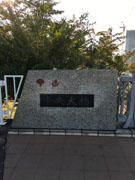 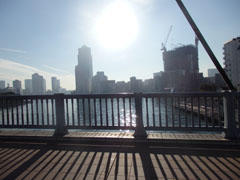
I personally like the scene of Zero, who was lonely, holding a warm karaage from the Kawamoto family and returning across this bridge.
(I also like karaage, isn't it relevant?...(^^;) )
The Chuo-ohashi Bridge was built in 1993, and was designed by a French design company in the image of a Japanese helmet. The "Messenger Statue" commemorating the friendship between the Sumida River and the Seine faces the Sky Tree.
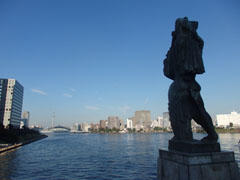
The image of a woman holding a sailing ship is the French ship guardian angel.
What's the scenery seen from the room? ? ? I'm living in a good place.
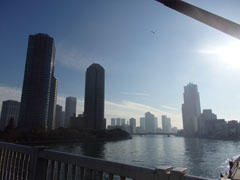
"Reigan Island water level station" often appears on the cover of Chapter 2.
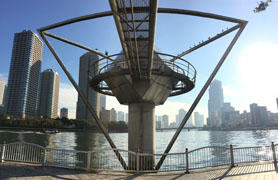
This is the starting point for measuring water levels in Japan.
At the beginning of Chapter 3. It's calm to do it here.
It's nice to take a break in Paris.
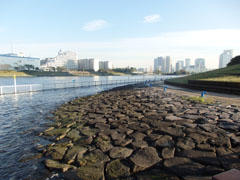
I often come here. Door picture of Chapter 5...
I'm going to see you.
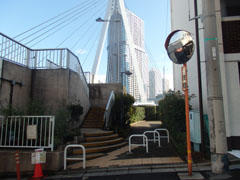
The scenery and cityscapes with bridges and rivers in Chuo-ku play a role in expressing the loneliness and conflict of zero and the warmth of the Kawamoto family.
I also crossed the bridge while thinking, "Wow, it's beautiful" with my child riding behind my bicycle.
Under the high speed near the river "somewhat anxiety"..."I feel like that.
Interaction with local people makes you feel "warm-" or feel
I love the beautiful and distinctive bridges and rivers, and the city with a lot of warmth of people.
That's why the psychological description of the characters says, "I understand.... (>_<) "and more emotionally than other works. It's not bright in shogi, so if you know it, you can enjoy it more....
Learn with Nya Shogi  
...And it's time-up here. (a little)
Tsukishima seems to have more spots, but this time it's so far because the area around Chuo-ohashi Bridge was too cozy and relaxed.
If you are interested, please take a walk with a comic in hand.
Immerse yourself in the world of lions in March.
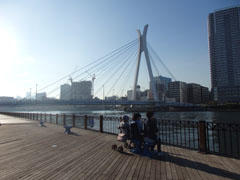
[Slow of Satsuki's Koi]
December 13, 2016 16:00
Minato Park has opened. Some construction work still remains, but once this is completed, you can go to the Sumida River Terrace. There is a slope and it seems that you can go to the Sumida River Terrace even in a wheelchair. When you go up to the embankment, you can see the Reigishi Island Observation Station and Chuo-ohashi Bridge.
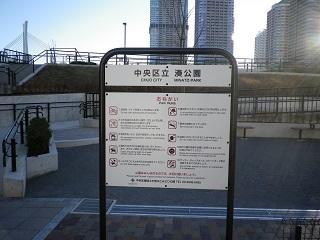
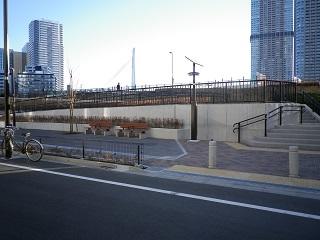
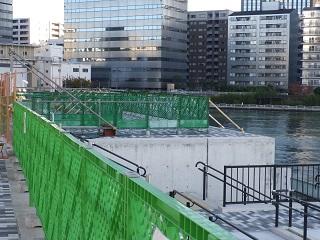 << Some construction work remains. A little more until completion >>> << Some construction work remains. A little more until completion >>>
Reigishi Island Observation Station. Japan's standard is determined from the average sea level of Tokyo Bay, but here is the survey of the average sea level. At present, the observatory has been moved to the oil vase, but it seems that surveying is still continuing at the Reigishijima Coral Station.
 <<<<<<<<<<The wire of Chuo-ohashi Bridge can be seen behind the Reigishijima tide center. >>>>> <<<<<<<<<<The wire of Chuo-ohashi Bridge can be seen behind the Reigishijima tide center. >>>>>
It is designed with the image of Chuo-ohashi Bridge and helmet. The bridge has a structure called Shachokyo Bridge. Shin-ohashi Bridge has the same structure, but the number of wires is greater in Chuo-ohashi Bridge, which is because when the number of wires increases, the calculation becomes complicated, and computers can be used, making it possible to calculate That's it.
There is a statue named messenger at Chuo-ohashi Bridge, praying for the safety of the ship sailing. The Sumida River and Seine connected a friendly river in 1989, and a "messenger" was sent by Jack Sirak, the mayor of Paris at the time, and he donated a "houseboat" to thank him.
.
.
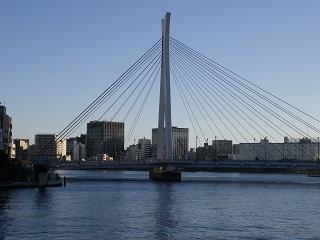 <<<<<<<<<<<<<<<<<<<<<<<<<<<Lower left] >>>>> <<<<<<<<<<<<<<<<<<<<<<<<<<<Lower left] >>>>>
Mr. Shirak is a pro-Japanese school, and everyone who loves sumo, knows there are various episodes.
Another thing that has been cleaned up is the Eitai Bridge. Construction began in the summer (early summer), and on December 2nd and 3rd, all temporary scaffolds have been removed and painted again.
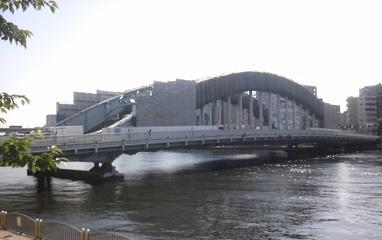 <<<<<<<Summer, under construction. >>>>> <<<<<<<Summer, under construction. >>>>>
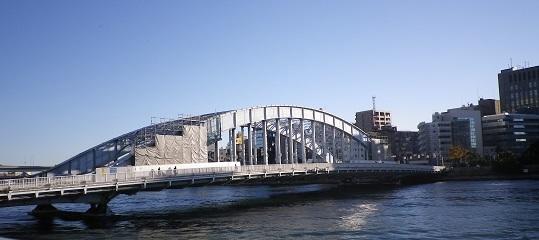 <<<<<<<< Temporary scaffold still remains on December 2 >>>>> <<<<<<<< Temporary scaffold still remains on December 2 >>>>>
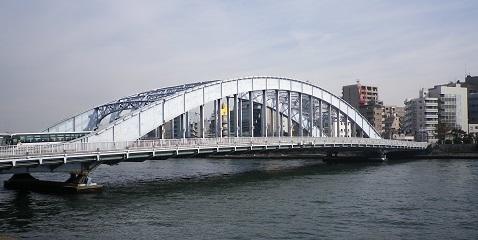
<<<<<<<< Temporary scaffolding was removed on December 3 >>>>>
Well, let's go back to the beginning, Minato Park. It's already cold season, but the night view is also beautiful.
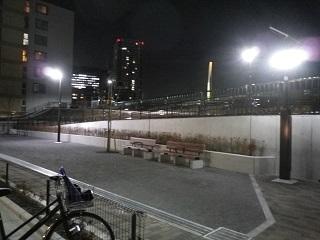
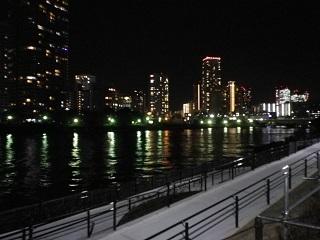
[Silver]
December 12, 2016 18:00
From October 6 to 20, 2016, the 11th stamp rally antenna shop in Chuo-ku was held.
I bought it with a guidebook in my hand, but forgot to send it on the application deadline. 
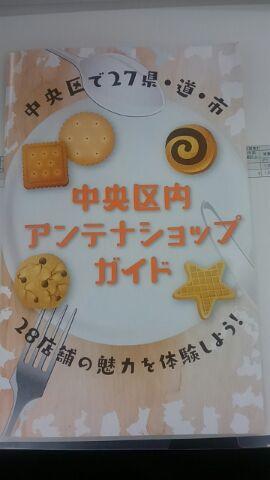
By the way, my friend told me that he had won the lottery and  received a prize. (The story of shopping will be described later.) received a prize. (The story of shopping will be described later.)
A photo  of the prize sent from "Wakayama Kishukan Tokyo Nihonbashi Store-Ikora-". of the prize sent from "Wakayama Kishukan Tokyo Nihonbashi Store-Ikora-".
Assortment of whole Wakayama mandarin orange fun set (juice, jelly, etc.).
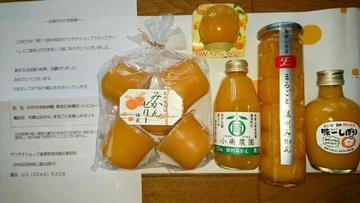
After all, if you buy it, let's apply and send it.
Next year's antenna shop stamp rally is a humiliation battle. I'm looking forward to it.
At that time, if you do not if you do not  return return   to your hometown during the New Year, we recommend that you purchase the taste to your hometown during the New Year, we recommend that you purchase the taste    of your hometown at the antenna shop. of your hometown at the antenna shop.
Click here for information on the previous antenna shop participating stores. You can see the location.
http://www.city.chuo.lg.jp/bunka/shisetsu/antenashop.html
 *My friend talked with the shop when I shoped. *My friend talked with the shop when I shoped.
"When I visited the antenna shop, I bought a dried plum in Kishu. Umeboshi, which happened to be purchased, was made of plums harvested this year.
When accounting at the cash register, the owner of the shop said, "The umeboshi of the year of the monkey is auspicious," and "It's a plumboshi that calls for good luck." The dried plums of the year of the monkey, once every 12 years, have brought  good luck good luck .' .'
Oh, what kind of luck do you have? First of all, let's buy this "umeboshi that brings good luck". For purchase, at "Wakayama Kishukan Tokyo Nihonbashi Store-Ikora-"! Let's go to Ikora.
[Sam]
December 12, 2016 12:00
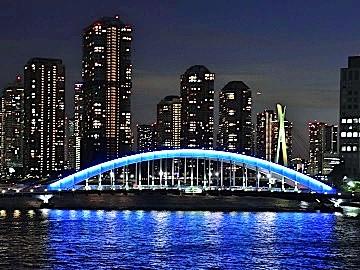 A project to extend the life of bridges significantly with the latest technology for aging bridges over major arterial roads promoted by the Tokyo Metropolitan Bureau of Construction. A project to extend the life of bridges significantly with the latest technology for aging bridges over major arterial roads promoted by the Tokyo Metropolitan Bureau of Construction.
As part of this, the lighting up was canceled after May 23 due to the construction of the arch of the Eitai Bridge of the Sumida River Bridge to increase the durability of the entire bridge and extend the life of the bridge. Construction has been completed.
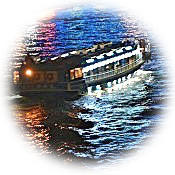 For the first time in seven months, the familiar pale light-up has been resumed. For the first time in seven months, the familiar pale light-up has been resumed.
At the mouth of the Sumida River, there are Ryogoku Bridge from the upstream (highway No. 6 Mukojima Line / high speed No. 7 Komatsugawa Line), Shinohashi Bridge, Kiyosu Bridge, Sumida River Ohashi, Eitai Bridge, Chuo-ohashi Bridge, Tsukuda-ohashi Bridge, Kachidokibashi Bridge, Tsukiji Bridge, and Tsukiji Bridge are lit up.
In addition to the bridge format, the color of the lighting is also devised for each, and it is worth seeing.
Night lighting of bridges accentuates the night scenery and also works as a landmark.
On the river surface, the light of the light up, the city lights of the riverbank, the illuminations of the houseboat are fused and reflected, creating a scene unique to the waterside.
[The Rabbit of Tsukuda]
December 3, 2016 12:00
Discover a small bird that is unfamiliar to "Ukishima" near Aioi Bridge in Ishikawajima Park.
What a little grebe!
In Tokyo, I've seen it at Shinjuku Gyoen and Kasai Wild Bird Garden, but I've seen it.
It is a bird that can be seen all year round, and its summer feathers are dark brown, and now winter feathers are light brown.
The figure is plain, but diving is a great deal! The feet are on the buttocks like a ship screw, so you can dive for a few minutes.
You may have a hard time taking a picture because you look up from an unexpected place.
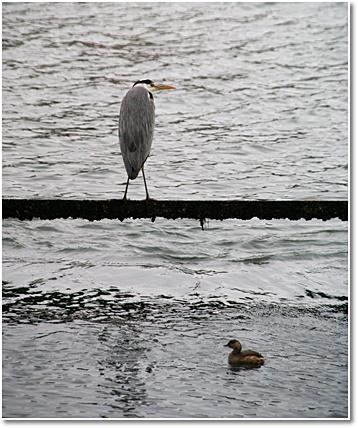
Are you greeting Mr. grey heron, the owner of Ishikawajima Park?
On this day, when I thought I had dived, I was appearing in the middle of the Sumida River.
I can't take a picture anymore.
On another day, on the same floating island, this time the Ooban!
The giant van is also a resident bird, but here in Ishikawajima Park, it only shows up in winter and occasionally.
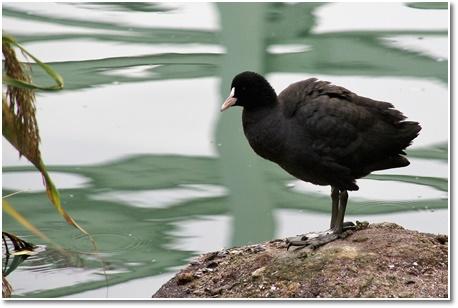
It is a monotone with a black body and a white forehead, and in West it is a symbol of beauty and elegance from its color and personality.
On the other hand, in English, "the forehead is rising" is called as blad as coot (Oban).
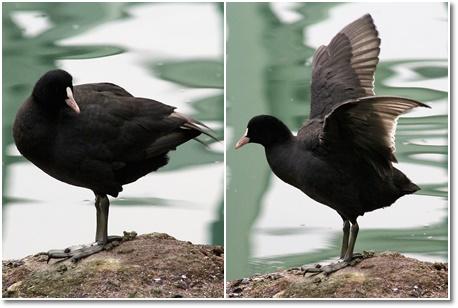 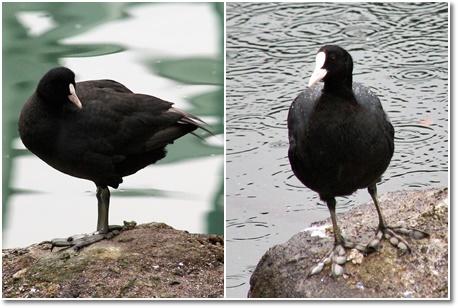
The white forehead on the right is much larger than the one on the left.
That's a proof of adult bird! The ovan on the left is still a young bird.
Big water! With the power of this foot, you're going to dive in the water.
When I meet the Ooban, I always think, but somehow, is it similar to "Kaonashi"?
There are spots that can be seen almost every day during the winter.
It is near the Kamejima sluice gate on the Kamejima River. You can see it from Minami Takahashi and from the terrace made this year.
It's black on the moored boat, so please look for it.
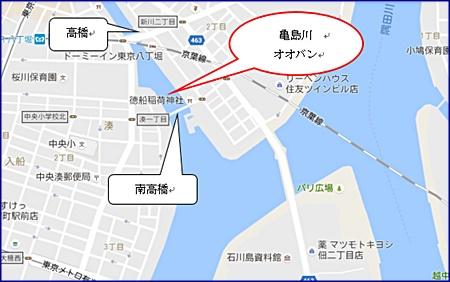
[Nojinya]
December 1, 2016 12:00
On October 30, the number of foreign tourists visiting Japan (inbound tourists) reached 20.05 million (announced by JNTO), surpassing 20 million for the first time. The government doubled the target number of inbound customers in March this year to 40 million by 2020, but it has become extremely common to see foreigners in Chuo-ku. On the other hand, a local friend who moved to Tokyo said, "I can't get a hotel, what should I do! 。 。 。 There are vacancies, but it's expensive and I can't stay at the company's prescribed travel expenses." I often go to Kansai and Hokkaido, which are popular among foreign visitors to Japan on business trips, but I certainly feel that it has become difficult to make reservations for hotels that have been set up recently.
I wonder if this is the case. It seems that the number of shared room-style accommodations with many beds in some rooms such as guest houses, mainly in sightseeing spots, has recently increased. How about in Tokyo? 。 。 。 When I searched, it seems that there are many guesthouses in areas such as Asakusa, Minami-Senju, Shinjuku, etc., but in Chuo-ku, where business passenger demand is strong, there are many business hotels such as Toyoko Inn, Super Hotel, and Apa Hotel, but I never heard much about guesthouses.
A while ago, the story of Toyomi Bridge and the novel "Onjuku Kasemi" ("Chuo-ku (Part 5)-Onjuku Kasemi-~ (/archive / 2016/11/post-3819.html) "), But on a sunny Sunday morning, across the Toyomi Bridge and across the Nihonbashi Bridge Name of Nihonbashi River. 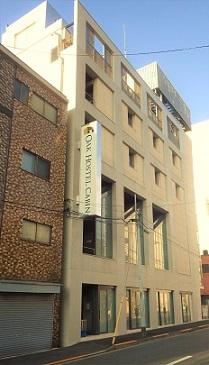 When you climb the stairs and open the door on the second floor, you will receive a reception. When I heard the story, it was still a guest house. As it opened in March 2015, I should have passed in front of me many times, but I didn't notice it because it was night and the appearance was like a normal office building. It seems that there was no introduction on the Chuo-ku Tourism Association blog yet, so I was in the middle of a walk, but decided to cover it. When you climb the stairs and open the door on the second floor, you will receive a reception. When I heard the story, it was still a guest house. As it opened in March 2015, I should have passed in front of me many times, but I didn't notice it because it was night and the appearance was like a normal office building. It seems that there was no introduction on the Chuo-ku Tourism Association blog yet, so I was in the middle of a walk, but decided to cover it.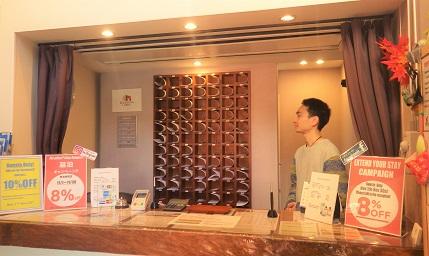
Take off your shoes in front of the reception on the second floor and put them in a shoe locker beside it. Because it is locked, there is no mistake or loss of shoes that tend to be a large inn, so it is safe. The back of the reception is a shared lounge, which seems to be comfortable with the bright sunlight in the morning. There is also a kitchen that can be used freely by guests in the lounge, and at night it will be lively with a drinking party for exchanging information on a trip! 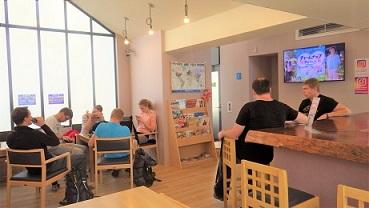 The 1st, 3rd and 4th floors of a 5-story building are accommodation floors, with 86 cells (private rooms) as in the capsule hotel. There is no large public bath because it is an economy hotel, but you can sweat your trip in the shower room on the 5th floor (9 rooms)! The 1st, 3rd and 4th floors of a 5-story building are accommodation floors, with 86 cells (private rooms) as in the capsule hotel. There is no large public bath because it is an economy hotel, but you can sweat your trip in the shower room on the 5th floor (9 rooms)! 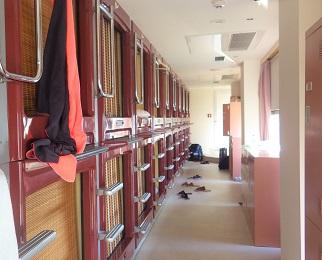 In addition, there are washing machines and dryers (paid), as well as rentals of towels and yukata (paid). There seems to be a rental bicycle (600 yen a day), so I would like foreigners who are staying to visit the famous places in Chuo-ku by all means. In addition, there are washing machines and dryers (paid), as well as rentals of towels and yukata (paid). There seems to be a rental bicycle (600 yen a day), so I would like foreigners who are staying to visit the famous places in Chuo-ku by all means. 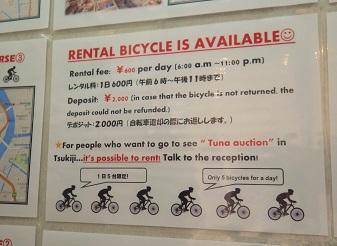 In the novel, Onjuku Kasemi was an inn where people could stay with peace of mind due to the thick humanity of the people surrounding the master's Rukasemi, but in the inbound era Kasemi "Oak Hostel Cabin" seems to be a cozy stay. In the novel, Onjuku Kasemi was an inn where people could stay with peace of mind due to the thick humanity of the people surrounding the master's Rukasemi, but in the inbound era Kasemi "Oak Hostel Cabin" seems to be a cozy stay.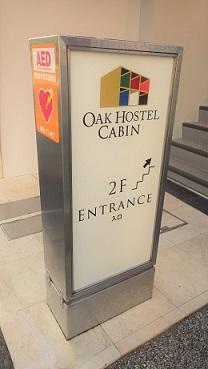
[Oak Hostel Cabin]
Location 1-16, Nihonbashi-Hakozakicho, Chuo-ku, 103-0015, Japan
Phone: 03-6264-9452
Accommodation fee: ¥2,500/ Name ~ (depending on the day)
Access It is about a 7-minute walk from Kayabacho Subway Station, Suitengu Station, and TCAT.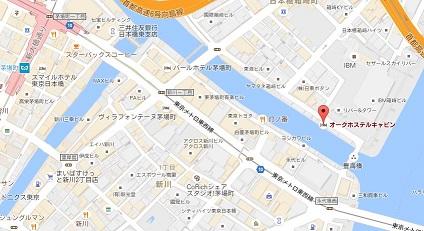
1
|
Links
|



![]()









![]()
![]()
![]()



 A project to extend the life of bridges significantly with the latest technology for aging bridges over major arterial roads promoted by the Tokyo Metropolitan Bureau of Construction.
A project to extend the life of bridges significantly with the latest technology for aging bridges over major arterial roads promoted by the Tokyo Metropolitan Bureau of Construction. For the first time in seven months, the familiar pale light-up has been resumed.
For the first time in seven months, the familiar pale light-up has been resumed.




 When you climb the stairs and open the door on the second floor, you will receive a reception. When I heard the story, it was still a guest house. As it opened in March 2015, I should have passed in front of me many times, but I didn't notice it because it was night and the appearance was like a normal office building. It seems that there was no introduction on the Chuo-ku Tourism Association blog yet, so I was in the middle of a walk, but decided to cover it.
When you climb the stairs and open the door on the second floor, you will receive a reception. When I heard the story, it was still a guest house. As it opened in March 2015, I should have passed in front of me many times, but I didn't notice it because it was night and the appearance was like a normal office building. It seems that there was no introduction on the Chuo-ku Tourism Association blog yet, so I was in the middle of a walk, but decided to cover it.
 The 1st, 3rd and 4th floors of a 5-story building are accommodation floors, with 86 cells (private rooms) as in the capsule hotel. There is no large public bath because it is an economy hotel, but you can sweat your trip in the shower room on the 5th floor (9 rooms)!
The 1st, 3rd and 4th floors of a 5-story building are accommodation floors, with 86 cells (private rooms) as in the capsule hotel. There is no large public bath because it is an economy hotel, but you can sweat your trip in the shower room on the 5th floor (9 rooms)!  In addition, there are washing machines and dryers (paid), as well as rentals of towels and yukata (paid). There seems to be a rental bicycle (600 yen a day), so I would like foreigners who are staying to visit the famous places in Chuo-ku by all means.
In addition, there are washing machines and dryers (paid), as well as rentals of towels and yukata (paid). There seems to be a rental bicycle (600 yen a day), so I would like foreigners who are staying to visit the famous places in Chuo-ku by all means.  In the novel, Onjuku Kasemi was an inn where people could stay with peace of mind due to the thick humanity of the people surrounding the master's Rukasemi, but in the inbound era Kasemi "Oak Hostel Cabin" seems to be a cozy stay.
In the novel, Onjuku Kasemi was an inn where people could stay with peace of mind due to the thick humanity of the people surrounding the master's Rukasemi, but in the inbound era Kasemi "Oak Hostel Cabin" seems to be a cozy stay.


